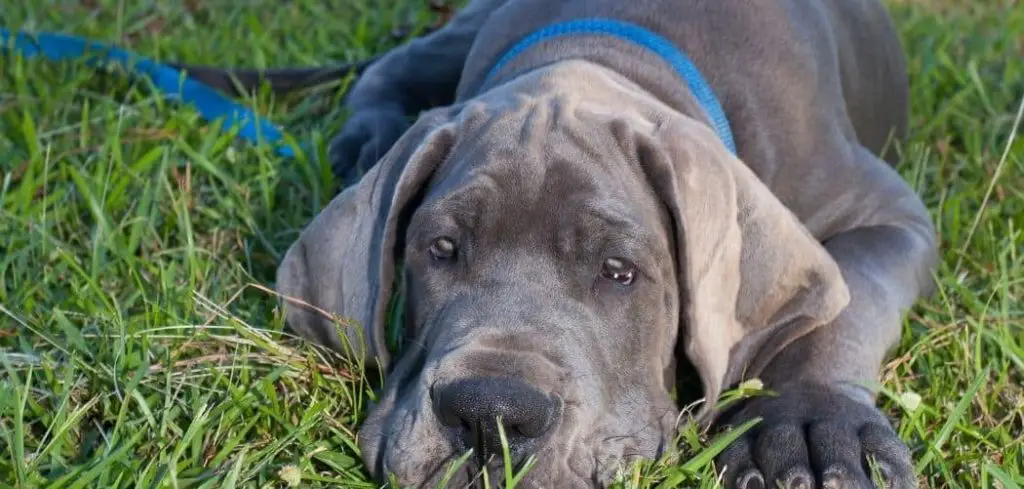Panting and drinking excessive amounts of water in dogs can be alarming, especially if it comes on suddenly or persists longer than expected.
While panting is a natural cooling mechanism and drinking helps with hydration, when both occur excessively, it may signal an underlying health issue.
We outline the common causes of panting and excessive thirst in dogs, what you can do at home, and when to seek veterinary help.
Table of Contents
Dog Panting and Excessive Thirst — Why It Happens
Dogs pant and drink excessively for a variety of reasons, ranging from simple overheating to serious medical conditions. Heatstroke, kidney disease, Cushing’s disease, diabetes, and certain medications can all trigger both heavy panting and increased thirst.
Heart problems and pain may also contribute, as dogs often use panting as a way to cope with discomfort.
If your dog is panting heavily and draining the water bowl more than usual, it’s important to consider the possibility of an underlying health concern rather than dismissing it as normal.

Dog Panting and Excessive Thirst: Common Causes
Heatstroke
One of the most urgent causes of panting and excessive thirst is heatstroke. When dogs overheat, their primary way to cool down is through panting, which often becomes rapid and heavy.
Alongside this, they will instinctively drink more water to combat dehydration. You may notice drooling, red gums, staggering, or even collapse.
Heatstroke is life-threatening and requires immediate veterinary attention.
Read more: Dog Only Drinking Water and Not Eating (Here’s why)
Kidney Disease
The kidneys regulate water balance in the body. When they are not functioning properly, a dog will often drink excessively to try to flush out toxins.
Panting can occur because of discomfort, nausea, or anemia associated with kidney disease.
Dogs may also lose weight, vomit, or have changes in appetite. This condition is especially common in older dogs and can progress quickly without treatment.
Cushing’s Disease
Cushing’s disease, caused by an overproduction of cortisol, is a common endocrine disorder in middle-aged and senior dogs.
Excess cortisol leads to increased thirst and urination, as well as panting even when the dog is at rest. You may also see a pot-bellied appearance, thinning skin, and hair loss.
Because these signs develop gradually, owners sometimes mistake them for normal aging until symptoms become severe.
Diabetes
In diabetic dogs, excess glucose in the blood draws water into the urine, causing increased thirst and frequent urination.
Panting may occur due to high blood sugar, dehydration, or diabetic ketoacidosis — a dangerous complication.
Weight loss, changes in appetite, and lethargy often accompany these signs. Without veterinary care, diabetes can quickly become life-threatening.
Heart Disease
When the heart struggles to pump efficiently, fluid may build up in the lungs, making it harder for the dog to breathe.
Panting is a natural response to this shortness of breath, while thirst can increase as the body attempts to manage changes in fluid balance. Coughing, weakness, and reluctance to exercise are additional red flags.
Medications
Some commonly prescribed medications, including steroids like prednisone, can cause both excessive thirst and panting as side effects.
While not always dangerous on their own, these symptoms should be monitored closely.
If your dog is on medication and suddenly seems to be panting and drinking far more than usual, contact your vet to confirm whether this reaction is expected or if the dosage may need adjusting.
What to Do If Your Dog Is Panting and Drinking Excessively
If you notice your dog panting and drinking more water than normal, start by assessing their environment. Ensure they are not overheating and provide access to fresh, cool water. Move them to a shaded or air-conditioned area if needed.
Monitor their activity. If the panting and thirst seem related to exercise or warm weather, give them time to cool down and see if symptoms improve.
Keep track of how much water your dog is drinking each day, as this information will help your veterinarian in making a diagnosis. A sudden or drastic increase is more concerning than gradual changes.
If your dog is on medication, check whether these symptoms are listed as expected side effects. Do not stop medication without veterinary guidance, but make note of the changes and contact your vet.
Above all, trust your instincts. If something feels off, it’s better to err on the side of caution and schedule an exam.
When to Call or Visit Your Vet
You should seek veterinary attention immediately if your dog’s panting and excessive thirst are accompanied by signs such as vomiting, diarrhea, collapse, or disorientation. These can indicate heatstroke, diabetic crisis, or severe kidney issues.
If your dog has persistent heavy panting at rest, coughs, or shows a distended belly, heart disease may be involved, and urgent evaluation is needed.
Gradual changes, such as steadily increasing thirst and panting over weeks or months, should also not be ignored, as they may point to chronic conditions like Cushing’s disease or kidney failure.
Any time your dog seems distressed, weak, or unable to settle, it’s safest to consult your veterinarian promptly.
Read more: Dog Panting and Eating a Lot (What it means)
Key Takeaway
Panting and excessive thirst in dogs may sometimes stem from something as simple as warm weather, but they can also be warning signs of serious health problems like kidney disease, diabetes, or heart failure.
The best step you can take is to observe your dog carefully, note any changes, and consult with your veterinarian if symptoms persist or worsen.
With timely care, many of the underlying conditions can be managed effectively, helping your dog stay comfortable and healthy.
